"There are no rules" – Eddie Van Halen: the last guitar mag interview
Remembering a legend, one year on from his passing

In 2016, then-Total Guitar Editor Stuart Williams visited Eddie Van Halen at his 5150 studios to talk about his EVH brand and his pioneering history as a player and tone-shaper. It was a rare chance to sit down with one of the most important guitarists of all time and he found an icon who was affable, humble and happy to reflect on his legacy.
"Eddie Van Halen is the cover star that every guitar magazine wants," says Stuart, "a pioneer who changed the way we approach pretty much every aspect of the instrument. From tone to technique and the gear we use to do it. Not since Jimi Hendrix has there been a guitar hero who revolutionised the electric guitar in so many areas, and most importantly, he did it through songs rather than inaccessible technical compositions tailored towards a niche audience.
"In 2016, Total Guitar was given the opportunity to realise that cover interview via Eddie's guitar company, EVH. The instruments are built and distributed by Fender, but it's way more than a logo on a headstock. This is Eddie's company, and he had a hand in all key decisions and designs.
"The interview was confirmed to take place at 5150 - the studio building adjacent to Eddie's home. There are many TG contributors who were - and still are - more qualified to interview Eddie Van Halen before me, but as requested by EVH, it had to be the editor.
"Fast forward to the day of the interview. I was accompanied by Fender/EVH's Helen Varley and EVH's Matt Brown to Eddie's house/studio. Months of planning came down to the next 60 minutes - Fender had flown us over, my questions had been approved, and I was nervous!

"You see, there are plenty of tales and accounts of Eddie Van Halen - a guy whose excess was matched by his outspoken, no-shit attitude, particularly towards interviewers who he didn't engage with. There was a lot riding on the next conversation, and if it went wrong, the 11-hour flight home was going to feel a hell of a lot longer.
"We sat in the car outside the electronic gates, and I still remember the fear. 'What if I say something that makes him angry?', 'What if the recorder breaks down? What if the spare recorder breaks down? What if both recorders break and my phone runs out of memory?'. Then I noticed the sign that said 'Private Property: Armed Security Will Be Called".
Get the MusicRadar Newsletter
Want all the hottest music and gear news, reviews, deals, features and more, direct to your inbox? Sign up here.
To demonstrate some of his techniques, Eddie grabbed a Wolfgang off the wall and began to play parts of Eruption
The gates opened and we went into the studio. There we waited in the lounge area - the walls lined with signature guitars. Next thing, a small pomeranian dog came running in, followed by Eddie's wife, Janie. A few moments later, in walks Eddie Van Halen.
"People like Eddie Van Halen don't just walk in. They exist on album covers and posters and giant screens at gigs. They're indelible, godlike entities, not guys who shake your hand and pick up their dog. "He's just done his first magazine cover…he'll be on the cover of GQ with George Clooney" Ed told us proudly. Of course! You're Eddie Van Halen! Why would that even seem unusual?!
"The interview went by in a blur, and the fear vanished as soon as Eddie started to vape. In between asking me about Wales and remembering playing in Cardiff, to recounting how Floyd Rose brought him prototypes of his vibrato to try, Ed graciously answered questions about that guitar, that amp, that tapping technique and many more.
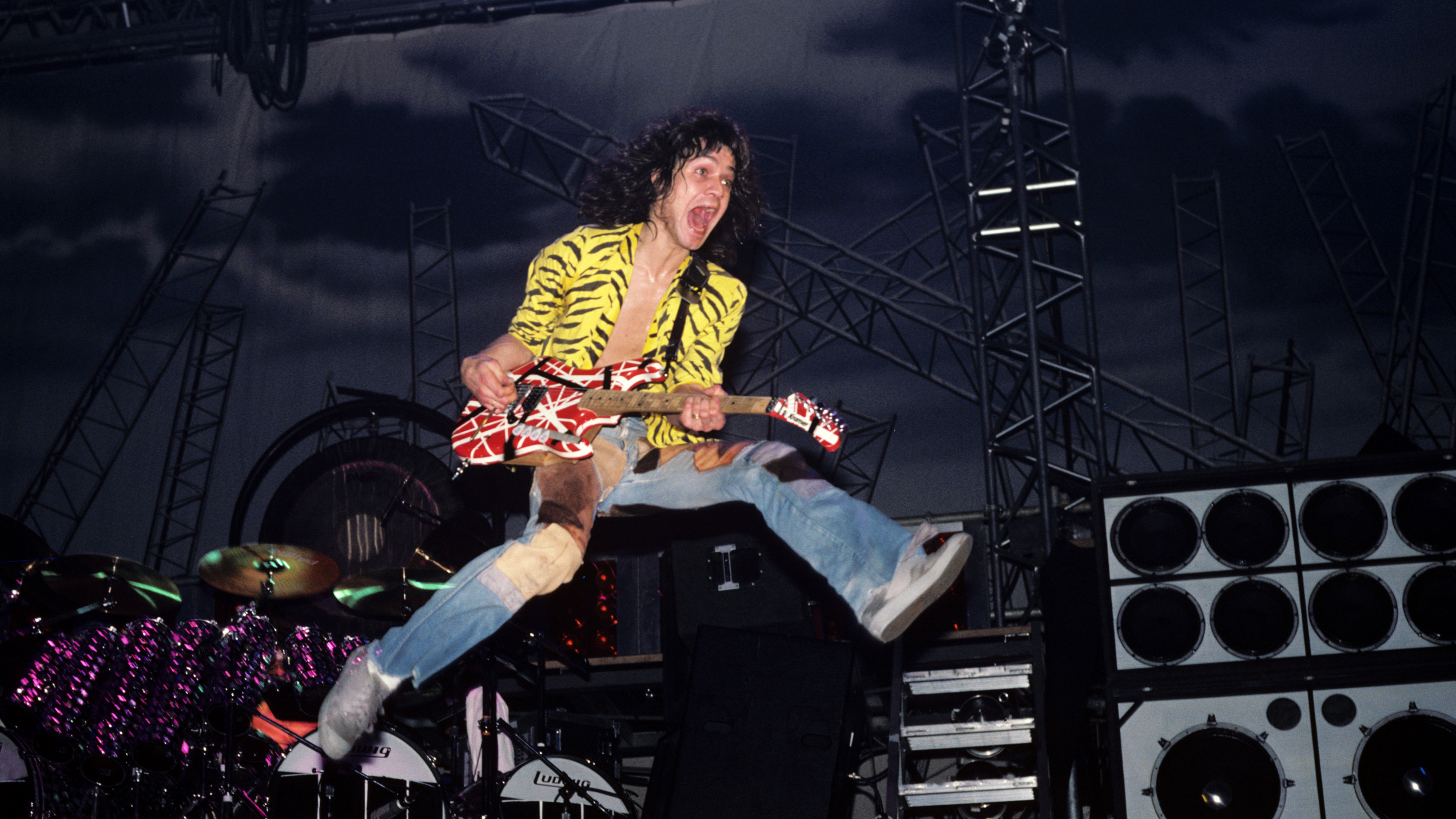
To demonstrate some of his techniques, Eddie grabbed a Wolfgang off the wall and began to play parts of Eruption. Then explained that many people overcomplicate guitar-playing and his guitar parts (apparently Slash plays Ain't Talkin' 'Bout Love wrong").
"Before I knew it, our time had come to an end. Eddie chatted after the recorder had stopped and left me with an overwhelming sense of his humility. Asking, "So what else are you guys doing out here?". "Nothing! We've come to talk to you!" I told him. He was genuinely amazed. Here I was, the editor of British guitar magazine who was given access to one of the greatest players to ever pick up a guitar and he couldn't believe or comprehend that we had made a trip to Los Angeles "just to talk to me".
Working for a guitar magazine means that you get to meet a fair few rockstars, but I can honestly say that the Eddie Van Halen that I met was not only the biggest, but the nicest to boot. RIP, Eddie.
"If I’m going to use it then it has to be my way, you know what I mean?"
It’s been nine years since you started the EVH brand - how did it first come about?
“It doesn’t seem that long! Well, I first started off with Music Man, and then I went to Peavey, and when they stopped, kind of… doing what I asked [laughs], we moved to Fender. Which is a great home, it’s a great team.”
It seems like you’re involved every step of the way with every piece of gear that goes out with your name on it.
“Well I have to be. If I’m going to use it then it has to be my way, you know what I mean? I’ll approach Matt, and Matt and I will approach the engineers, ‘How about this?’ - and everyone gets excited! Generally, depending on the intricacy or difficulty of the build, it can take anywhere between a year to three years to come to fruition.”
It also seems that your level of involvement is there regardless of the price, too?
“Well, the first thing we started out with was obviously the flagship/benchmark models. I very much wanted a versatile three-channel amp. That’s what I need to do my gig. As the brand evolved we expanded our line with some more affordable models, like the Lunchbox amp and the Wolfgang Standard for example.
“I just heard yesterday that a lot of players are buying the 1x12 cabinet because it’s the perfect match, and a reasonable price. When I use it, I use it with a 4x12 cabinet - for a 15-watt amp, it will still power a 4x12 cabinet and get a great sound - but I’ll have to try it through a 1x12 and see how it sounds, since everybody else seems to dig it that way!”
"I saved up for a ’68 Goldtop Les Paul with single-coil P-90 pickups...So what do I do? I take the chisel to it right away!"
What was it like building the Frankenstein, and doing that out of necessity?
“Let me start at the beginning. When I first started playing guitar, I was at the local music store, which wasn’t even a music store, it was kind of like a Radio Shack that also sold musical instruments, it was called Lafayette Music.
“I fell in love with this hollowbody 12-string because of the neck, and the first thing I did was I took six strings off, because it was a 12-string, and I didn’t want 12! They didn’t have what I wanted in the store, so it had already started there!
“Then, I got a paper route; we didn’t have any money and my parents couldn’t afford to buy us equipment. So I saved the money from delivering papers for two and a half to three years, and bought my first real guitar, which was a ’68 Goldtop Les Paul with single-coil P-90 pickups.
“So what do I do? I take the chisel to it right away! Because I wanted a humbucking pickup! But in Pasadena, there were no Les Pauls with a humbucker in them. There was one store in northern Pasadena - a Les Paul came in and they called me right away ‘Hey, we’ve got a Les Paul!’ I walk in and I go, ‘Ah, shit! It ain’t the kind Clapton plays!’ It didn’t have humbuckers.
“So, of course, I hunted down a humbucker, took a chisel and made the hole bigger and crammed it in there. I was lucky enough to solder it back properly, then I painted it black and added binding. I did all kinds of crazy shit to it.
“The funny thing is, I only changed the bridge pickup and left the P-90 neck pickup. Since my right hand was covering the bridge pickup, when I played people were going, ‘How the fuck’s he getting that sound out of a P-90?!’ Because that’s all they could see. Little did they know that I’d stuck a humbucker in there!

"I bought a Strat, and the rest of the guys in the band hated the way it sounded!"
“From there, I bought a Strat, and the rest of the guys in the band hated the way it sounded! And I couldn’t really handle the hum, so it was just a logical marriage to - with the humbucker - cross a Gibson with a Fender. Because I loved the vibrato bar, and that was probably the most difficult thing; trying to figure out how to keep that thing in tune. This might take a while, but I’ll try to explain…
“Everything from the bridge to the tuning peg had to be perfectly straight. The only reason a tremolo goes out of tune is because of friction. When you bring the vibrato bar down and if the string angle is wrong then it’s not gonna slide back to its original position.
“So, I would do things like take the string and put it through the tuning peg hole and wind it up instead of down, so there would be no tension on the nut to the tuning peg. I had a brass nut that I cut larger grooves into, and I put oil in it all to eliminate any friction that could cause the string to hang up.
“Another problem is Fender Strats always have the string retainers, I removed them. Again, to eliminate any other factor that would cause the string to not slide back and forth smoothly. As a result if I hit an open string too hard it would pop out of the nut.
“So, I’d have to keep my index finger on the other side of the nut to keep it from popping out! I got away with that - in the club days, through the whole first record and live on tour. That’s how I used the stock Fender tremolo until the locking tremolo was introduced.”
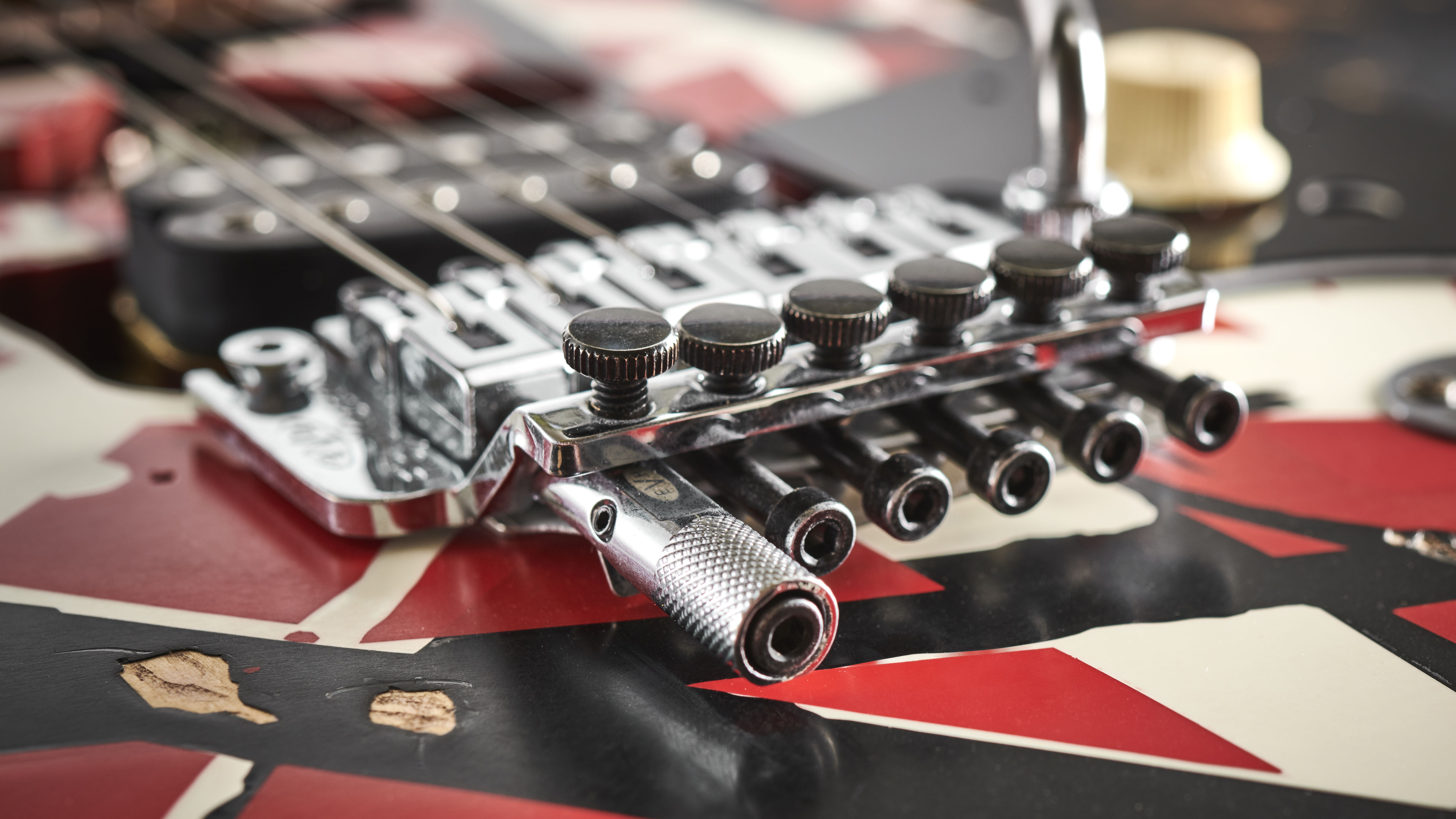
"If you’re happy with what you have then fine, but if not then do something about it. I apply it to everything"
So a lot of it came out of solving problems?
“Yeah, a lot of it was through necessity and just mistakes. A lot of accidents. Like the one-pickup thing wasn’t intentional. I just didn’t know how to wire it back up to the five-position toggle switch, it was just too complicated!
“Even with what we call the Shark guitar - the Ibanez Destroyer that I cut a chunk of wood out of - it’s got two pickups in it, but I couldn’t figure out how to wire it to the toggle switch, so I just went straight to the pot and boom! I’m happy.”
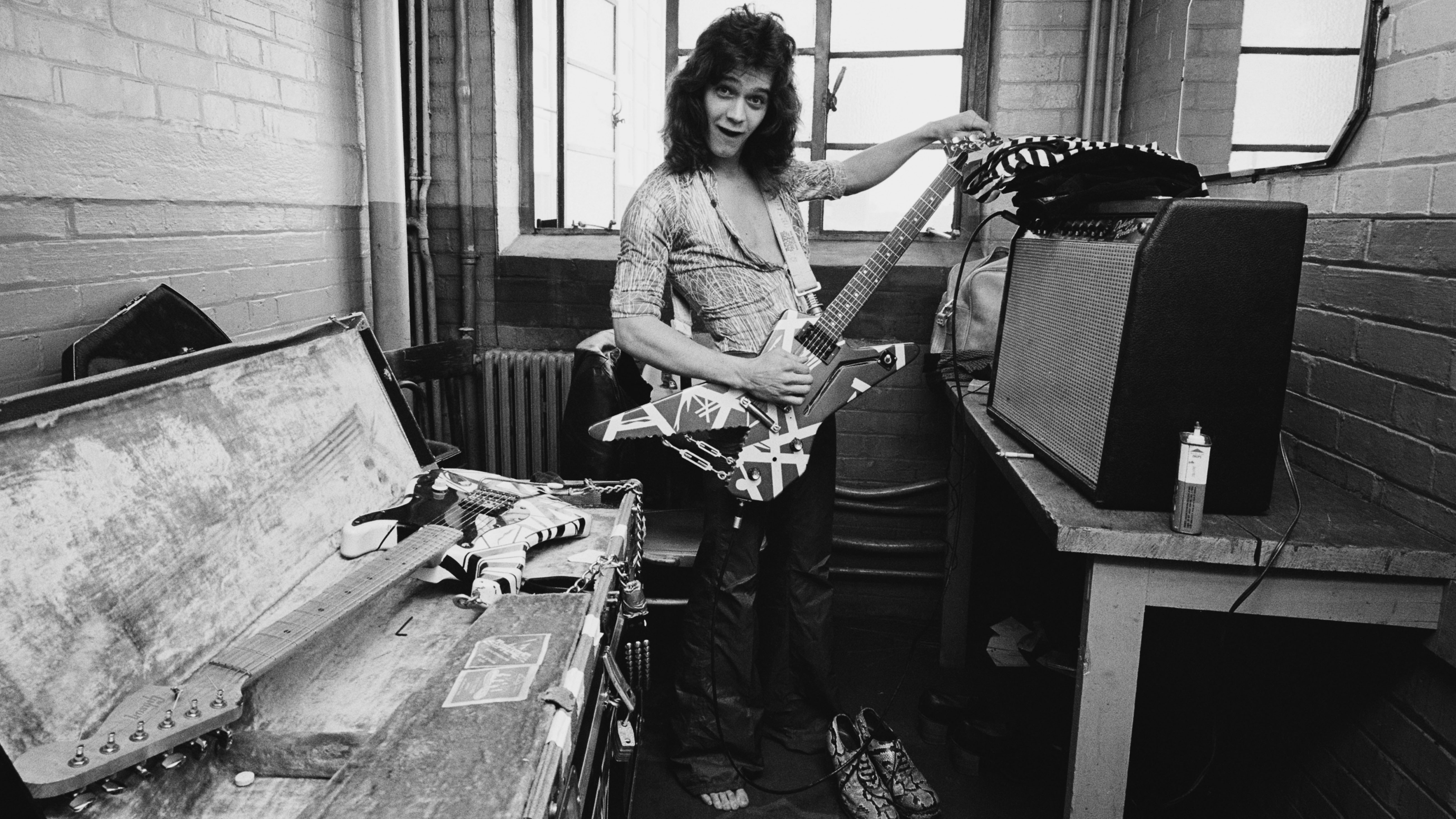
Were you always the kind of person who was taking things apart?
“Well yeah, like I said, the very first thing that I did [to a guitar] was take six strings off a 12-string, because I didn’t want 12 strings. Anything just to make it do what I wanted.”
Do you think people are less inclined to tinker with their gear these days?
“It’s totally up to them. If you’re happy with what you have then fine, but if not then do something about it. I apply it to everything. Even if there’s something about my car I don’t like, or anything for that matter I’ll change it, until I like it.”
"I went ‘Ding! I wonder what’ll happen if I hook my main amp up to the light dimmer in the house?!’ Of course, I blew out all the fuses in the house"
Do you think the advancement in technology and gear killed some of the need for players to be imaginative with their gear?
“Yeah, I mean, really there was no humbucker Strat available until I built one. Now it’s just common, everyone uses them now. But even before I did what I did, I didn’t know anybody who fucked around with guitars and amps as much as I did.
“It wasn’t until the first interview I ever did that I tried to explain how I got the sound out of my Marshall with the Variac [a variable voltage transformer], except our singer said, ‘Don’t tell ’em the truth, lie!’. So I told them that I cranked the thing up to 140 volts, instead of lowering it. And, god! The editor’s note in the next magazine was, ‘Don’t do what Eddie said!’ - because everyone was frying their amps!
“The real reason I did it was I had my main baby Marshall, except it was too loud, and it would blow up on full voltage. So not only did lowering the voltage take care of the amp not blowing, it also enabled me to contain it and play anywhere between 60 to 90 volts depending on the size of the room. Everything was all the way up on the amp, and the Variac was my volume knob.
“What made me think of lowering the voltage was I bought another Marshall head not realising it was a European model. So I plug it in, and there’s a really dim pilot light. I’m waiting and waiting and there’s no fucking sound coming out! ‘Goddammit, I got ripped off!’
“So I just let it sit, and I come back to it an hour or two later. I pick up my guitar and it’s really, really quiet, but it sounded like it was all the way up. Then I realise ‘Shit! The damn thing’s set on 220 volts!’
“Then I went ‘Ding! I wonder what’ll happen if I hook my main amp up to the light dimmer in the house?!’ Of course, I blew out all the fuses in the house because I wired it backwards, but once I figured it out, I went down to an electronics store and asked ‘Do you guys sell an industrial type of variable voltage regulator?’ and they go ‘Yeah, here you go!’ It was called a Variac.
“So I plug my amp into it and voila. I was going, ‘Holy shit, this is great!’. But you know, so many people like Tom Scholtz came out with the power soak or whatever. They all thought I had something in between the head and the cabinet, but I didn’t… it was a very happy accident that I bought that 220-volt Marshall!”
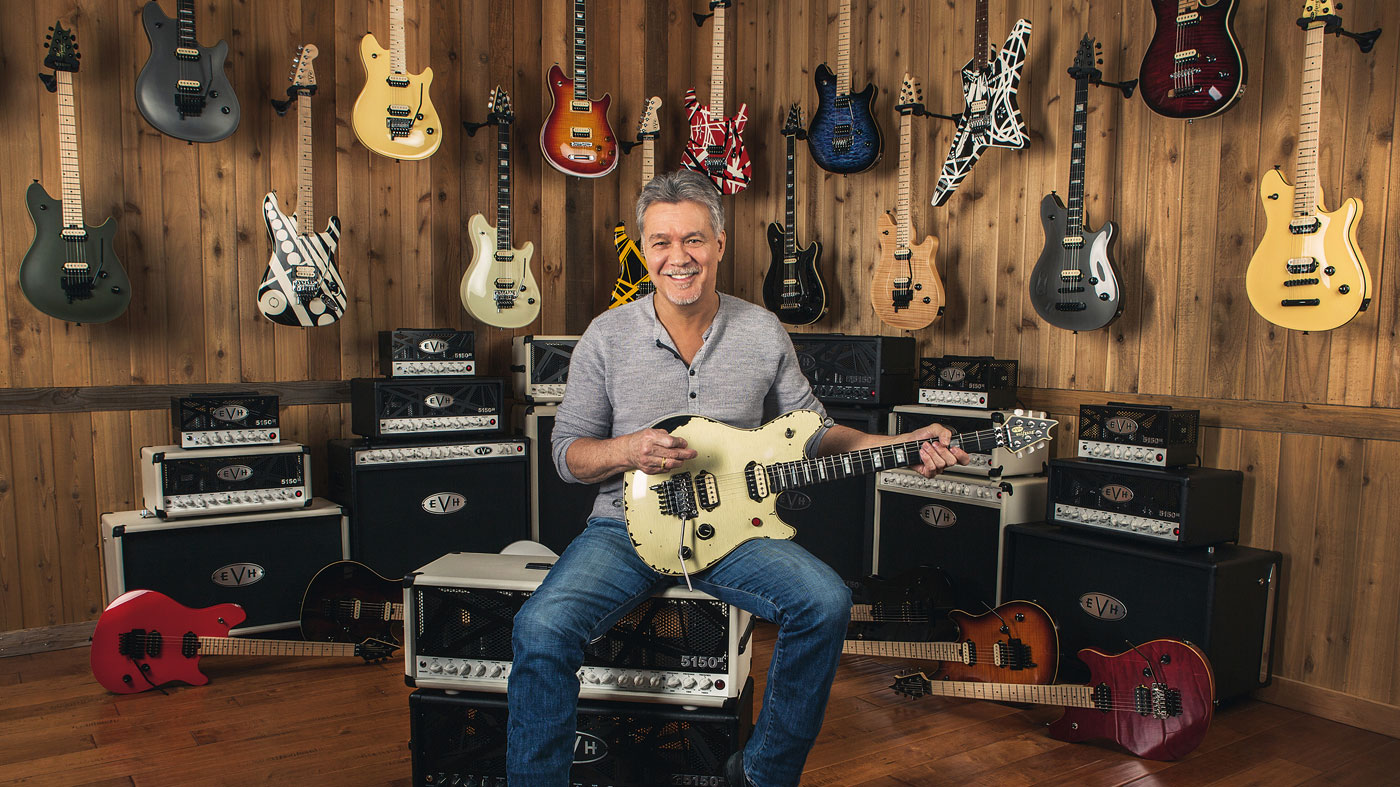
Your personal involvement in the development of EVH gear extends down to the very smallest detail, too…
“Well, we scrutinise every little piece of the guitar to what I need. The pots that we have are guaranteed for a million turns or something like that. They’re really low friction on the volume knob, because when I’m doing Cathedral live, the normal pots would freeze up on me because I’m turning it so fast.
“After two weeks they’d start making noise, so we had a bunch of different companies make us samples, and finally we’ve landed on one that makes a custom one, just for us. But at the same time, the tone knob is really stiff. You won’t accidentally bump it. Since I never use it, I like it stiff.”
"I mean, how many beginner guitarists do you know who stopped playing because their fingers hurt? Well, get lighter strings and set it up right!"
These guitars have your name on them, but they seem like they’re designed to be versatile, not just for your fans?
“No, no. It’s designed for anybody to use. There are a lot of country guys that love EVH amps and guitars. EVH guitars do everything I want and more. They’re very versatile, all-round guitars, as are the amps.
“It’s just a really well-built, a lot of attention to detail instrument, that makes it easy for anyone to play. I mean, how many beginner guitarists do you know who stopped playing because their fingers hurt?
“Well, get lighter strings and set it up right! I have a Harmony guitar - a really cheap beginner guitar, and what I always do is just lower the action until it buzzes, then I back it off a little bit. It doesn’t take a brain surgeon to figure that out!
“Which brings me to something really funny that I read years ago. Even though I love his playing, and I’m sure he’s a wonderful guy even though I’ve never met him, I read something where Ritchie Blackmore said ‘I play a Stratocaster because it’s harder to play than a Gibson’. And I’m going, ‘Wow, why would you want to make it hard on yourself?’
“Not that it’s really true, I mean, you can set up a Strat to play easy, too. But I always thought it was a strange comment, because I was always the opposite. For me it was like, the easier the better! That’s why our entry model [the Wolfgang Standard] guitar plays as well as the top of the line Wolfgang.”
So do you have a benchmark setup for the EVH guitars?
“Oh yeah! The guys on the assembly line do the final checks, and before it goes in the box, it’d better be set up right. And we do spot checks, and if it ain’t right, we get pissed!”
Is the idea basically that you should be able to walk into a guitar store, buy one and use it that night?
“Yeah, exactly. And you know, when I say in an ad, ‘This is what I use’ I mean it. There’s nothing custom about my stuff, or actually, it’s all custom for you and for me!”

There have been conflicting reports about the humbucker in the original Frankenstrat, could you clarify what guitar it came from?
“Yeah, it’s from a [Gibson ES-]335. Actually, if I had my phone here, I’d show you a picture of me playing that guitar. Somebody just sent me it, it’s the only picture that I have of myself playing it.
“I painted it white because, of course, I fucked with that, too! But yeah, I yanked it out of there. I took the rear pickup out and it was really hard. I mean… I pretty much destroyed that guitar because you had the f-holes to get to the electronics. Man! Talk about a pain in the ass! I just yanked the stuff out and once I got the pickup out I said ‘Fuck this guitar!’”
It was never going back in anyway…
“Nah!”
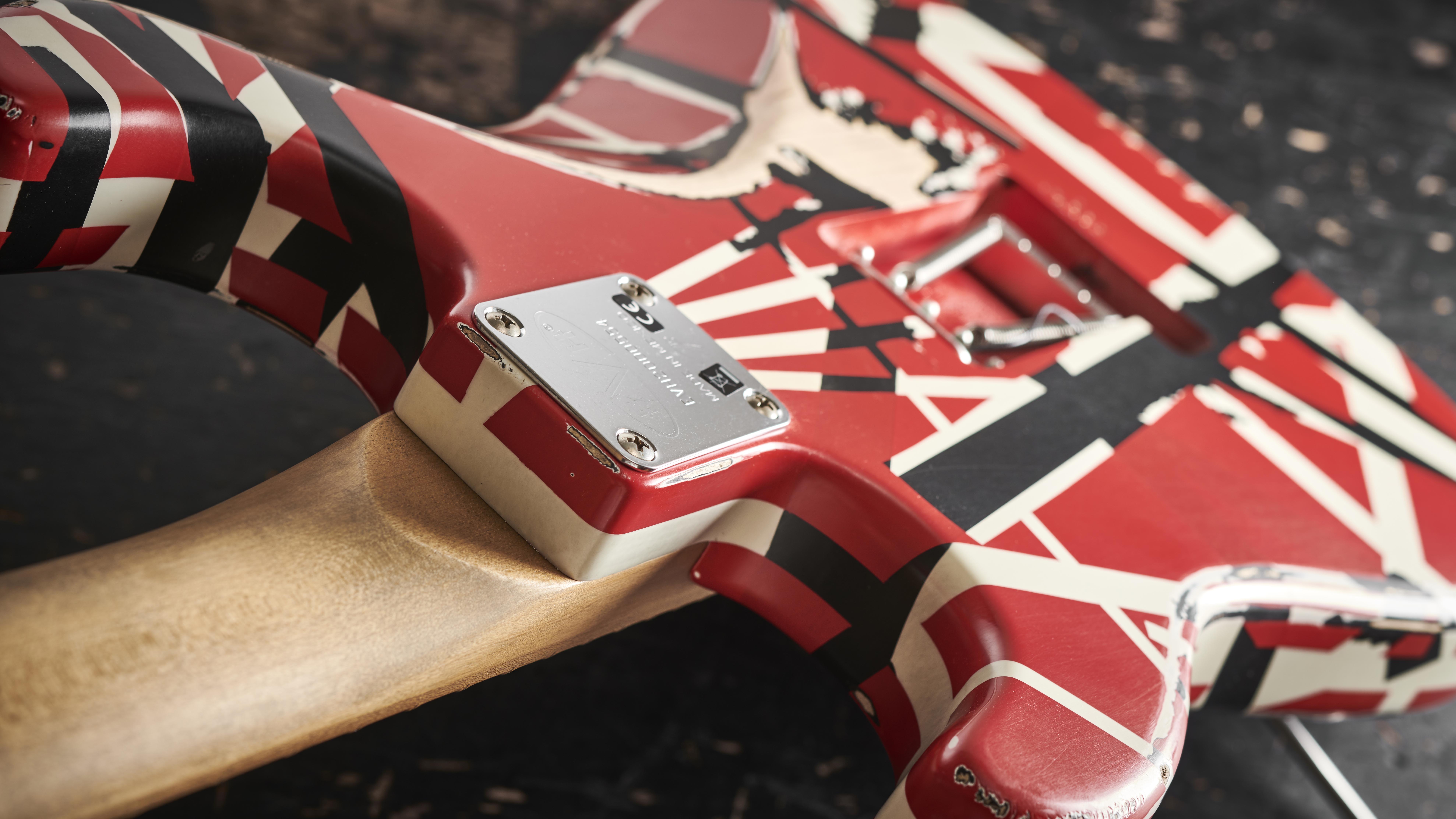
And when you made the tape finish, was that just another solution to a problem?
“It wasn’t a tape finish, I used tape to paint it that way. I have no idea what possessed me to do that! I wish I did, but it’s just one of those things. I have no fucking idea! And now I have a registered trademark on it. But at the same time it’s just like potting the pickup, dipping it in wax to hopefully stop feedback. I have no idea, nobody told me about it, it’s just straight from wherever ideas come from.
“I just had this crazy idea that maybe the coil windings vibrating caused that high-end squeal. Not controlled feedback, the high end squeal, the real nasty shit. The paint job and the potting of the pickup, I don’t have a fucking clue where these ideas came from! Everything I did back then was either intentional, or the outcome of a happy mistake.”
"Even the tape machines are too difficult for me!"
Are you quite technically minded with other stuff outside of guitars?
“Not really. Computers? Nah! We have a Pro Tools system in the studio, but I still use the tape machines. Even the tape machines are too difficult for me! The console’s too big. Too many knobs, you know?
“The only thing I really use on the console are the faders. I leave everything flat, because if you’re not getting the sound from your instrument then what’s the point? If you start EQ-ing to tape then you start getting in trouble.”
Does that extend to microphone placement? You get it right at the amp first?
“Yeah, mainly, your amp better sound good, or your drum better sound good!”
"Somebody goes ‘Hey, there’s a guy here named Floyd Rose and he wants to show you something...’"
You were one of the first players to get on board with the Floyd Rose vibrato, what was it like when you were first presented with it?
“Okay, this is a funny story - very true. Three tours in a row, every time we’d play Seattle - I can’t remember if it was ’79, ’80 and ’81 - it had to be ’79 because I never put it in the black and white guitar. So, in ’79, somebody goes ‘Hey, there’s a guy here named Floyd Rose and he wants to show you something’.
“He comes in and goes [with cupped hands], ‘You wanna try this?’ and I say, ‘Sure, what the fuck, why not!?’ So I gave him one of my guitars and asked him to put it in because I didn’t know how to do it. It was different to the Fender tailpiece and it wasn’t a direct swap.
“So I tried it, once it was ready to go and… it was a pain in the ass! For one, the Allen screws on the neck were very small, and in order to torque it down you’d either strip the Allen key or the screw would strip. But more importantly, when you’re playing the guitar, things bend and they move and the neck shifts a little bit.
“Depending on the temperature of the gig from the beginning to the end, the temperature fluctuates. So between every, fucking, song I had to unclamp and tune! And then Dave and the rest of the guys would be going, ‘Is he ready yet?!’ It was just a pain in the ass. So first I told him, ‘Beef the thing up!’ because I kept snapping shit.
“So he comes back the next year with a beefed-up model. But there was still the problem of having to tune between every song, so I told him, ‘Put some fine-tuners on it. I played a little cello and violin when I was in elementary school and those instruments have finger adjustable fine-tuners. Okay?’ So that’s what I meant.
“Then the third year he comes along and goes [cupped hands] ‘I did it!’ and I go ‘No! You fucking numbnut!’ Because now you needed a wrench to fine-tune it! So now instead of three, you’ve got nine, you know? I’m going ‘No, you idiot, I meant fucking finger tuners! You’ve seen ’em before!’ Then he patents the fucking thing behind my back. Pissed me off… whatever!”
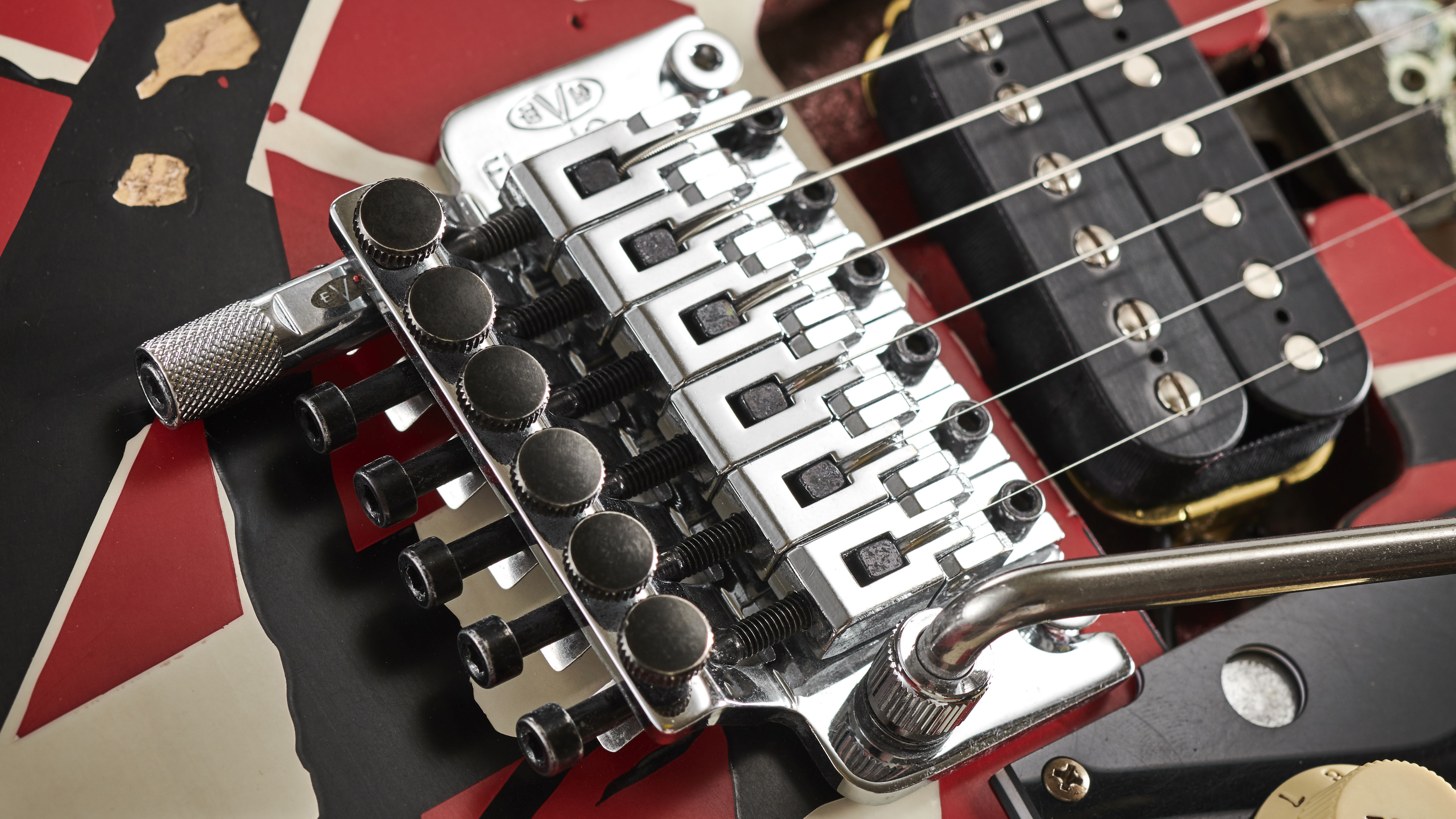
You’ve always had your Floyds set without a rout underneath?
“All flush to the body. Everything needs to be connected. I even like my cabinets on wood, not on wheels. Everything needs to be solidly connected. The more connection, the more sustain and resonance.”
Could you explain why the pickup switching on a Wolfgang is backwards to the usual three-position?
“I have to have it that way! When I use my right hand on the fingerboard, if it’s wired the other way I always bump it up. So it’s just out of necessity, the USAs are like mine, but the Specials are like a Les Paul. But you can turn them around - that’s what I did, just turned it around because I kept bumping it.”
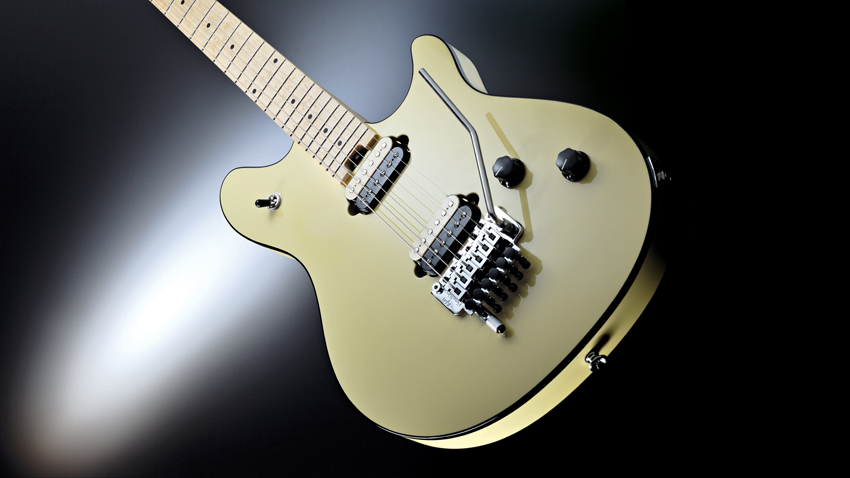
"It’s the ultimate guitar for me"
You seem to be favouring the Wolfgang in recent years, could you take us through a few of your favourite features on it?
“Well, it’s the ultimate guitar for me. Everything from that 12-string I took the six strings off, to the Frankenstein, to everything else I’ve broken or rebuilt - this is the ultimate guitar, which we still continue to improve on. Like that low-friction pot, we just added it a year ago. We’ve upgraded it to stainless steel frets so they don’t wear out. We’re always just doing something. As Matt would say, ‘Building a better mousetrap’.”
“I played a Special during I’ll Wait during the last tour. I traded off between that and the Star guitar. I actually preferred it to the Star because it has the neck pickup. It just so happens that on the record I used the neck pickup, so for that I preferred the Special. And we’re still tinkering. Just last week we were tinkering with different magnet types to make the guitar sound even better.”
Does that come from a place where you live with something for a while and then your tastes change?
“It’s a natural evolution. I hate to put it this way, because it doesn’t apply to everything - like my wife or anything - but… Everything guitar-based! [laughs] It’s not necessarily that I get tired of it, but after a while you go ‘Hey, this could be a little better, I’d like a little more of this’.
“Like the difference between the 5150 III and the IIIS. I didn’t like the fact - even though a lot of people do like it - that on the 5150 III the second channel has a different tonal quality to the third channel. I want them to be identical in tonal response and quality. The same sound.
“So that when you’re facing the other way and not looking at which channel you’re on, you can’t tell, except one is just fucking over the top overdrive for soloing and the other is rhythm so you can have your guitar full up and it won’t drive you crazy feeding back. But yeah, we just continue to - in my mind - evolve and change and improve, and in turn give players a better product. It’s an ongoing thing.”
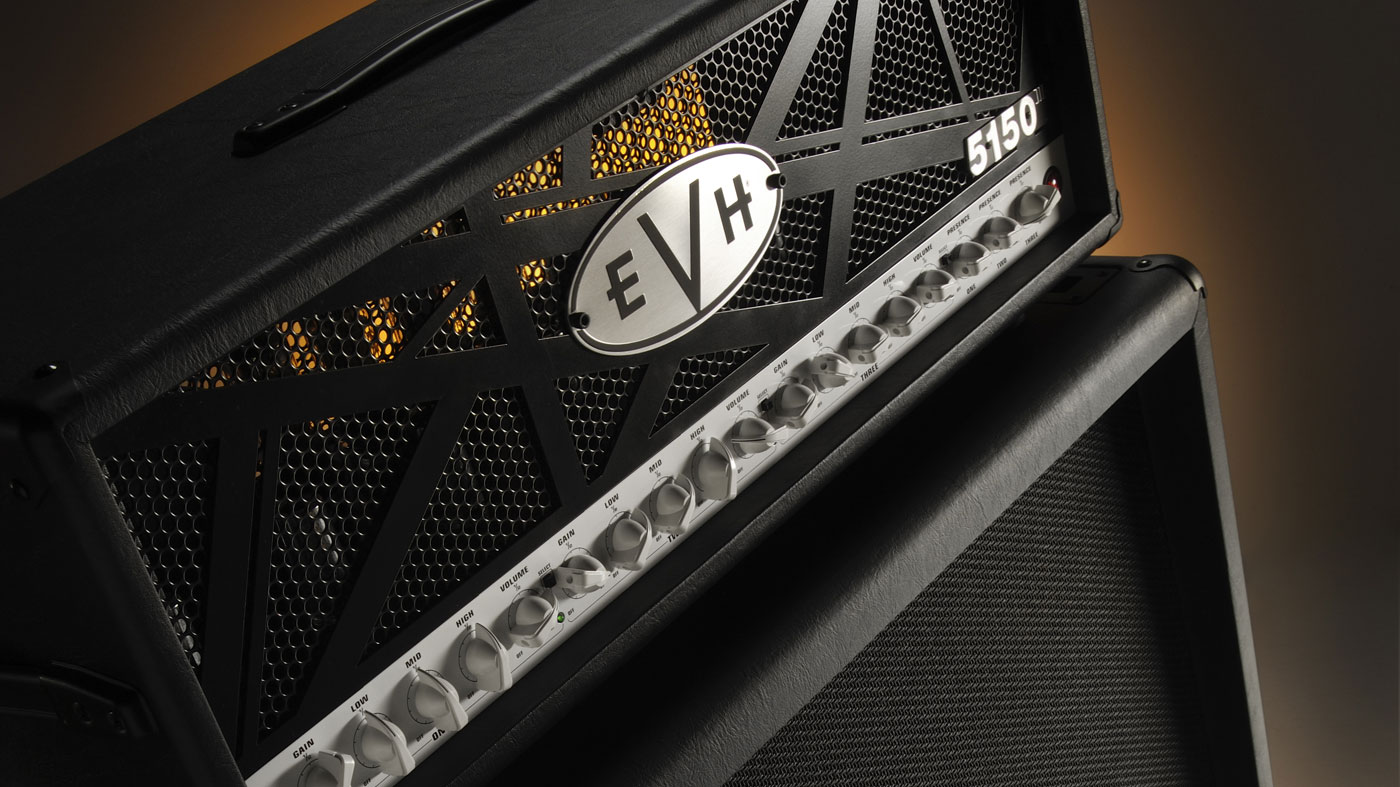
When you first designed the 5150, were you conscious of the fact that you were creating something that would become a benchmark in heavy guitar tones?
“I had no clue. I just wanted something that I liked. I just wanted a high-gain amp that wouldn’t blow up!”
How does it feel, you’re obviously used to being emulated, but still!
“Yeah, I guess it’s a wonderful feeling that people like the stuff we design. But even if they didn’t, I would still use it! Because really, that’s the bottom line. I have to like it otherwise it doesn’t go out.”
"I left it feeding back for a month! And then I put a bass through it and left it for another month"
We heard an interesting story about you bench testing the 5150 III with feedback…
“Oh yeah! I left it feeding back for a month! And then I put a bass through it and left it for another month, because I wanted a really low frequency to see how the amp and the cabinet would hold up. [I’d try] different feedback frequencies, really high, then I’d muffle the other strings once I got the note that I wanted it to feedback at, and I’d just leave it.
“I’ll never forget, we had a Fender meeting with the powers that be to talk about something, and we’re walking up the hill to the studio here and they hear this, ‘Ooooh’. Then we open the door and it’s ‘OOOOOH’ then we open another door and it’s just fucking screaming!
“And they all went ‘What the fuck are you doing?’ and I’m like ‘I’m crash-testing the amp!’ I don’t like stuff to blow up. So then I take it out on tour for a whole cycle before it was released to the public. Nothing goes out until I’ve totally fucking crash-tested it.”
So did it break down?
“No, it held up!”
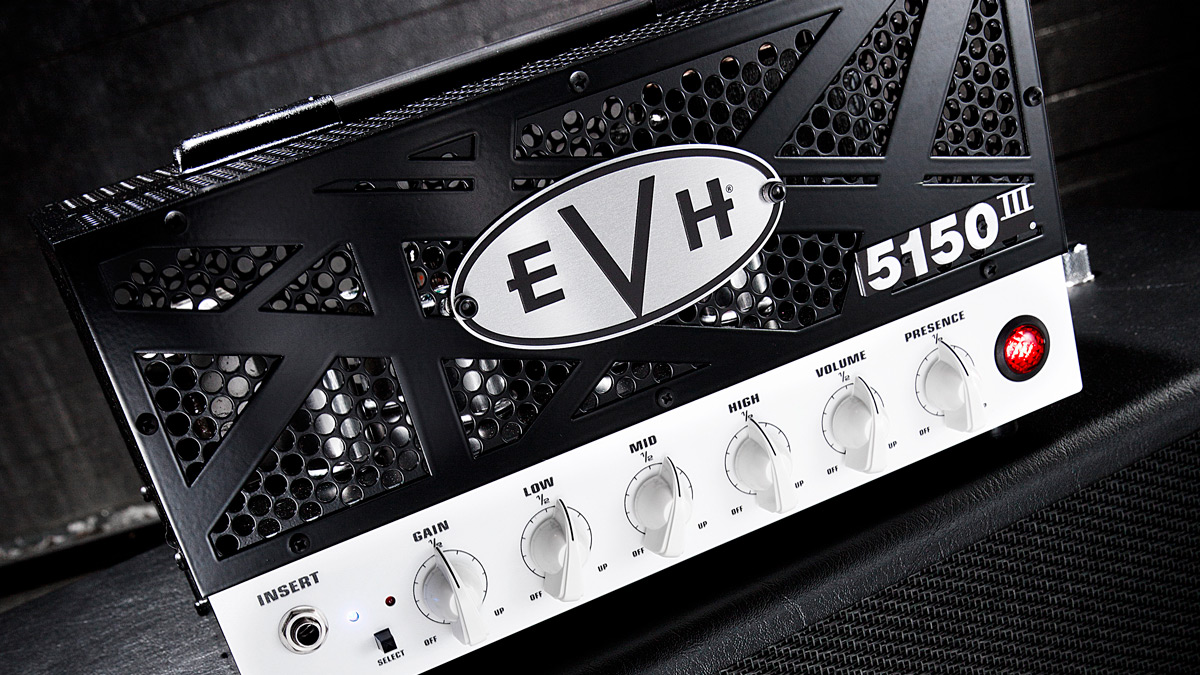
"I’m not endorsing a product; it’s my product, y’know?"
Were you secretly hoping that you’d be able to destroy it?
“No, no! I mean, even when I was with Peavey, guitars would show up in stores or even to me with loose necks or this and that. So I went to Peavey and said, ‘Give me a Wolfgang’ and I took the whole fucking guitar apart, right there, in the board meeting with Hartley Peavey sitting there, the owner of the company.
“I took the neck off, took the pickups out, took it all apart, then put it back together. The way I would. Then I grab the guitar, and I threw it across the fucking room and it hit the ground. I go, ‘Go pick it up’. The guy picked it up, and it was perfectly in tune, because the strings were stretched properly, the neck was tight, everything was the way it was supposed to be.
“I just looked at them and said, ‘Now tell me it’s [because of] shipping! It ain’t fucking shipping, you guys just aren’t setting them up right!’ Attention to detail. It blew their fucking minds.”
You seem very conscious of the fact that it’s your name on the gear
“Yeah, well I’m not endorsing a product; it’s my product, y’know? It’s definitely a team effort, I couldn’t do it on my own. But it’s a brand, it’s our company so to speak. The only variable or possible thing that we have no control over is tubes.
“Like last tour I blew a head once because I had a bad tube. But you know, you get a bad tyre on a car or whatever. We don’t make tubes. If we made EVH tubes, they wouldn’t blow! [Laughs]”
"I would have used anything if it sounded the way I wanted, but it didn’t"
You mentioned the Lunchbox earlier. It’s a small amp, but it has your sound.
“Yeah, and that’s the whole point. It’s a 15-watt amp, and it just screams. I mean, you could play The LA Forum with that amp. It’s got a quarter-power switch that brings it down, we used EL84s in it, they’re great tubes. It sounds like a 5150.”
Was it a challenge to scale that sound down?
“Everything’s a challenge, basically. When we come up with the idea they build it, and send it over and then I’ll suggest changes and it’s just back and forth until it’s right. The pickups on a Wolfgang - we had two companies each build us 40 pairs of pickups. So we had 80 pickups, and I didn’t like any of them!
“So I ask Fender, ‘Who makes your Strat pickups?’ They go, ‘Well, we do them in-house’. So I say, ‘Well, let’s build my pickup in-house’. First time around, first attempt, boom! That’s what I want! Because they listened.
“The other guys, I don’t know, I guess they just threw me something that they already had so they could say, ‘Hey, Eddie Van Halen uses this model pickup’. I mean it wasn’t the point, I would have used anything if it sounded the way I wanted, but it didn’t.”
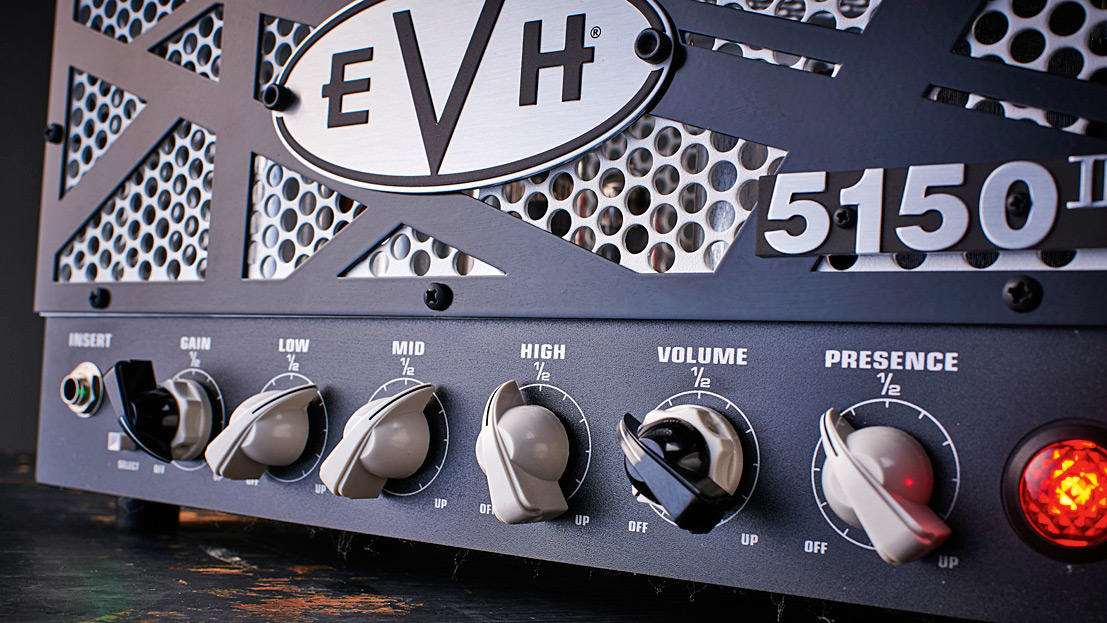
The power switching thing is kind of a continuation of the whole Variac idea
“Yeah! And on the combo version of the 5150 III it has a knob that does the same thing. It’s a different circuit, but it’s the same premise, so that’s actually more like a Variac.”
Could you imagine what it would have been like to have had that in your early days?
“Oh man! But these things happen for a reason, I guess…”
The Lunchbox also has a lot of features on it compared to a lot of low-wattage amps. Was important to keep features like full EQ, the effects loop, and so on?
“Oh definitely. Our mission is to build a better… everything. Whatever it is that we approach, it had better be better than our competition.”
And you’ve included Resonance and Presence controls on there. Do you think these are often misunderstood, sometimes forgotten by players?
“Well, you shouldn’t be afraid to fucking turn anything, you know! That’s my philosophy. I know it’s a Spinal Tap line, but I turn everything up to 15. To the point where it gets so ugly, and then I back it off to the point where the ugliness goes away. That normally ends up around 14, not 11!”
"You have 12 f***ing notes, the 13th one is the octave, do whatever you want with them"
More than 11…
“Yeah! And then we continue to push. Just like the burn channel on the 5150 IIIS is hotter than the 5150 III. It’s like a race car, every year you’ve gotta be faster. It’s never-ending.”
It sounds like you’re never going to stop looking for improvements in tone…
“It’s just innately part of my DNA you know? It’s who I am. I like people to be able to pick up a Wolfgang and a 5150 and not have to struggle to get a sound. I mean, I see so many people who plug into an amp and they don’t have a clue how to even set it. And with a 5150 III, it almost doesn’t matter where you set it, it’s going to sound good. Just turn the volume up, and it’s not difficult.
“To get a bad sound out of a 5150 is really difficult. I know so many engineers who have a 5150 III in their studio, because they re-amp. When the guitarist leaves they plug it all back through a 5150 III and the guy comes back the next day and goes, ‘What did you do man? It sounds fucking great!’”
Finally, do you have any advice for aspiring guitar players?
“Obviously, enjoy doing what you’re doing. Bottom line is, you’ve gotta love what you’re doing. There are no rules. I think it’s funny when people take all these music theory classes, it’s exactly that. It’s theory. You know? You have 12 fucking notes, the 13th one is the octave, do whatever you want with them. It’s really that simple. There are no mistakes: I call those passing notes! [laughs]”


I'm a freelance member of the MusicRadar team, specialising in drum news, interviews and reviews. I formerly edited Rhythm and Total Guitar here in the UK and have been playing drums for more than 25 years (my arms are very tired). When I'm not working on the site, I can be found on my electronic kit at home, or gigging and depping in function bands and the odd original project.









